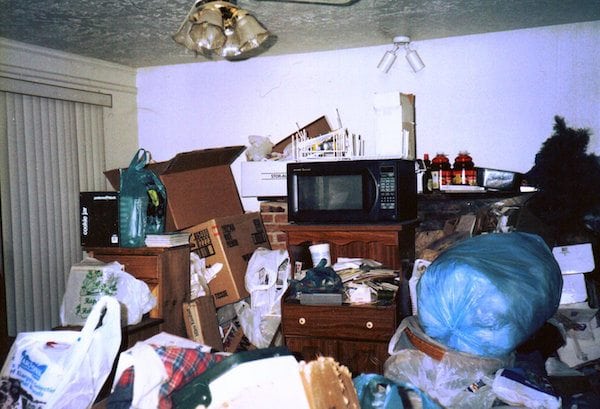Hoarding, for many years considered a type of obsessive-compulsive disorder, was reclassified in 2013 in its own category as a mental illness.
So what’s the difference between OCD and hoarding?
“Hoarding disorder bears very little resemblance to OCD,” says David F. Tolin, Ph.D., director of the Anxiety Disorders Center and the Center for Cognitive Behavioral Therapy at The Institute of Living. “What we see happening in the brain is very different. People with hoarding disorder have cognitive impairments that cause problems with decision-making and attachment to possessions. They say, ‘I don’t have a clutter problem. Who are you to tell me I don’t need these things?’ Many are resistant to treatment because they don’t realize the severity of their pathological need to save things.”
Tolin estimates up to 5 percent of the population, or 16 million Americans, might qualify as hoarders.
Hoarders feel an overwhelming desire to acquire, and keep, things – even if they don’t want or need them. They often become emotionally attached to their possessions and become upset when confronting a decision to discard things.
“Family members and friends often don’t understand,” says Tolin, co-author of “Buried in Treasures: Help for Compulsive Acquiring, Saving, and Hoarding” (Oxford University Press, 2007). “They ask, ‘Why don’t you just clean up?”
Hoarding seems to be related to impulse control disorders, depression, social anxiety, bipolar disorder or certain personality traits, although it sometimes follows a stroke or dementia. People with the disorder are chronically disorganized. Their houses are so cluttered that they can’t sleep in the bed or cook on the stove. The living space is filled with unwashed dishes and tattered newspapers.
“Hoarders are prisoners in their own homes,” says Tolin. “Although we don’t have a ‘cure’ for hoarding, we help people manage the disorder with cognitive behavioral therapy (CBT), a form of counseling that goes beyond talking. The therapist and a professional organizer visit the home to help the person regain control and learn how to make decisions about what to throw away.”
A Hoarding Disorder Research Program treatment study at the Institute of Living is examining the neural mechanisms of Cognitive Behavioral Therapy (CBT) response in hoarding disorder. Study participants engage in a 16-week course of cognitive behavioral therapy that encourages them to set goals, make decisions more effectively and teaches them ways to manage some the emotional upset associated with clearing up the clutter. Brain scans taken throughout the treatment will help researchers attempt to identify areas of the brain that might be affected by the disorder and, potentially, the treatment.
Tolin hopes the study will help create more targeted and effective approaches to treating those with hoarding disorder.
“The goal is to understand the effectiveness of CBT,” he says, “and to understand how CBT changes brain activity in people who hoard.”
Treatment Study Q&A
A Q&A with Dr. Tolin about the study, now underway at the Institute of Living, called Neural Mechanisms of CBT Response In Hoarding Disorder:
Q: What can participants in the study expect?
A: They will have a clinical interview and three noninvasive brain scans on three different occasions, and will receive group therapy designed to reduce the symptoms of hoarding disorder.
Q: What are the qualifications to participate?
A: The study is open to adults up to age 60 who have significant hoarding behavior and who meet certain other medical and mental health criteria.
Q: How long should participants expect to be involved in the study?
A: Study treatment lasts for 16 weeks.
Q: What are you hoping to learn?
A: The goal is to understand the effectiveness of cognitive-behavioral therapy, and to understand how CBT changes brain activity in people who hoard.
Q: What do you plan to do with the data collected?
A: We will publish the data in academic journals and then will take what we learn to re-evaluate our current treatment methods.
More information about hoarding disorder, the study and treatment options will be at several free community education events in and around Hartford this July. For more information, visit www.Hoardingresearch.com or call 860.545.7039
To learn more about hoarding treatment call 860.545.7039 or visit the Institute of Living. Also watch this video featuring David F. Tolin:

